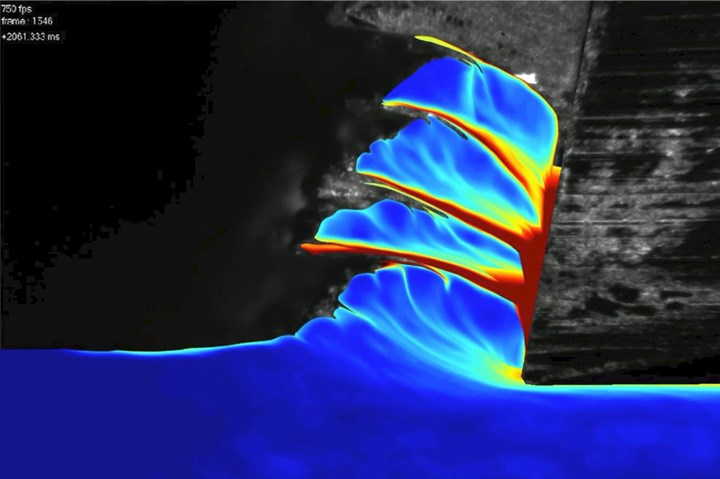Machining Gummy Materials: A New Use for Sharpies
Organic films help metal removal Purdue researchers discover
#aluminum
Researchers at Purdue University have determined that organic monolayer films on the surface of a gummy metal or alloy can result in a cleaner cut.
And those organic monolayers can be provided by glue, adhesive film or even a Sharpie.
According to Srinivasan Chandrasekar, Purdue professor of industrial engineering, “This ultra-thin film helps achieve smoother, cleaner and faster cuts than current machining processes. It also reduces the cutting forces and energy, and improves the outcomes.”

A single organic layer on the surface of a gummy material can result in better machining operations according to Purdue researchers. (Image: Purdue University)
The materials that can benefit from the organic molecules include aluminum, stainless steels, nickel, copper and tantalum.
The researcher discovered that the film on the metal surface by molecular self-assembly can locally embrittle the metal, which allows improved machining operations including cutting, drilling and grinding.
Adds Anirudh Udupa, the study’s lead author and Purdue School of Industrial Engineering researcher, “We are also learning through our discovery more about how environmental factors influence failure of metals.
“As we decipher how the organic molecular films improve the machinability of these metals, the better also is our understanding of common environment-assisted failures in metals, such as stress-corrosion cracking, hydrogen embrittlement and liquid metal embrittlement.”
Small Print
The Purdue researchers worked in collaboration with those at Osaka University (Japan) and the Indian Institute of Science (India). The research is supported by the National Science Foundation and the U.S. Department of Energy.
The study, “Organic monolayers disrupt plastic flow in metals,” by Tatsuya Sugihara, Anirudh Udupa, Koushik Viswanathan, Jason M. Davis, Srinivasan Chandrasekar, was published in Science Advances.
RELATED CONTENT
-
Plastics: The Tortoise and the Hare
Plastic may not be in the news as much as some automotive materials these days, but its gram-by-gram assimilation could accelerate dramatically.
-
Jeeps Modified for Moab
On Easter morning in Moab, Utah, when the population of that exceedingly-hard-to-get-to town in one of the most beautiful settings on Earth has more than doubled, some people won’t be hunting for Easter eggs, but will be trying to get a good look at one of the vehicles six that Jeep has prepared for real-life, fast-feedback from the assembled at the annual Easter Jeep Safari.
-
Cobots: 14 Things You Need to Know
What jobs do cobots do well? How is a cobot programmed? What’s the ROI? We asked these questions and more to four of the leading suppliers of cobots.


.jpg;width=70;height=70;mode=crop)






